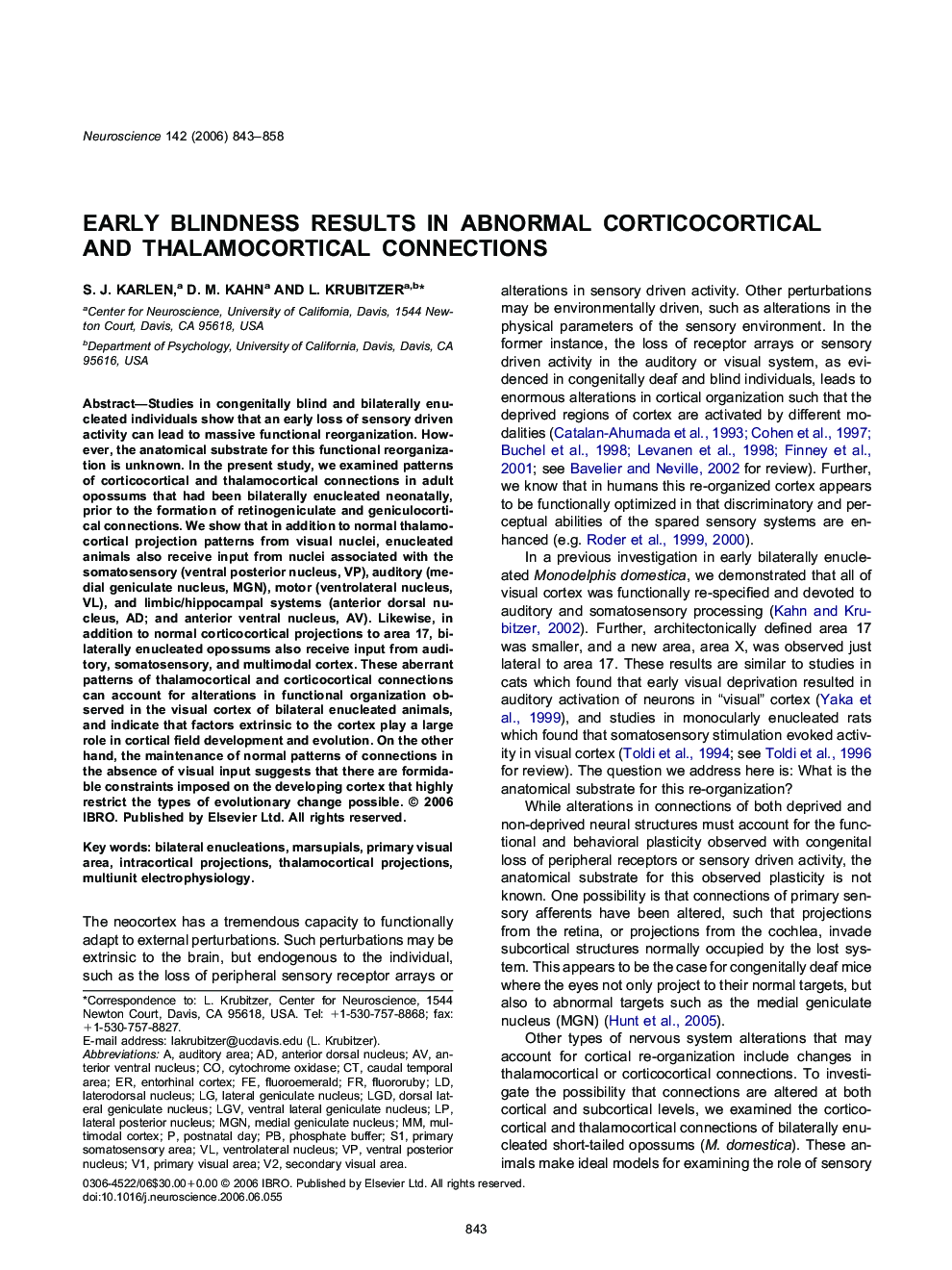| Article ID | Journal | Published Year | Pages | File Type |
|---|---|---|---|---|
| 4341966 | Neuroscience | 2006 | 16 Pages |
Studies in congenitally blind and bilaterally enucleated individuals show that an early loss of sensory driven activity can lead to massive functional reorganization. However, the anatomical substrate for this functional reorganization is unknown. In the present study, we examined patterns of corticocortical and thalamocortical connections in adult opossums that had been bilaterally enucleated neonatally, prior to the formation of retinogeniculate and geniculocortical connections. We show that in addition to normal thalamocortical projection patterns from visual nuclei, enucleated animals also receive input from nuclei associated with the somatosensory (ventral posterior nucleus, VP), auditory (medial geniculate nucleus, MGN), motor (ventrolateral nucleus, VL), and limbic/hippocampal systems (anterior dorsal nucleus, AD; and anterior ventral nucleus, AV). Likewise, in addition to normal corticocortical projections to area 17, bilaterally enucleated opossums also receive input from auditory, somatosensory, and multimodal cortex. These aberrant patterns of thalamocortical and corticocortical connections can account for alterations in functional organization observed in the visual cortex of bilateral enucleated animals, and indicate that factors extrinsic to the cortex play a large role in cortical field development and evolution. On the other hand, the maintenance of normal patterns of connections in the absence of visual input suggests that there are formidable constraints imposed on the developing cortex that highly restrict the types of evolutionary change possible.
